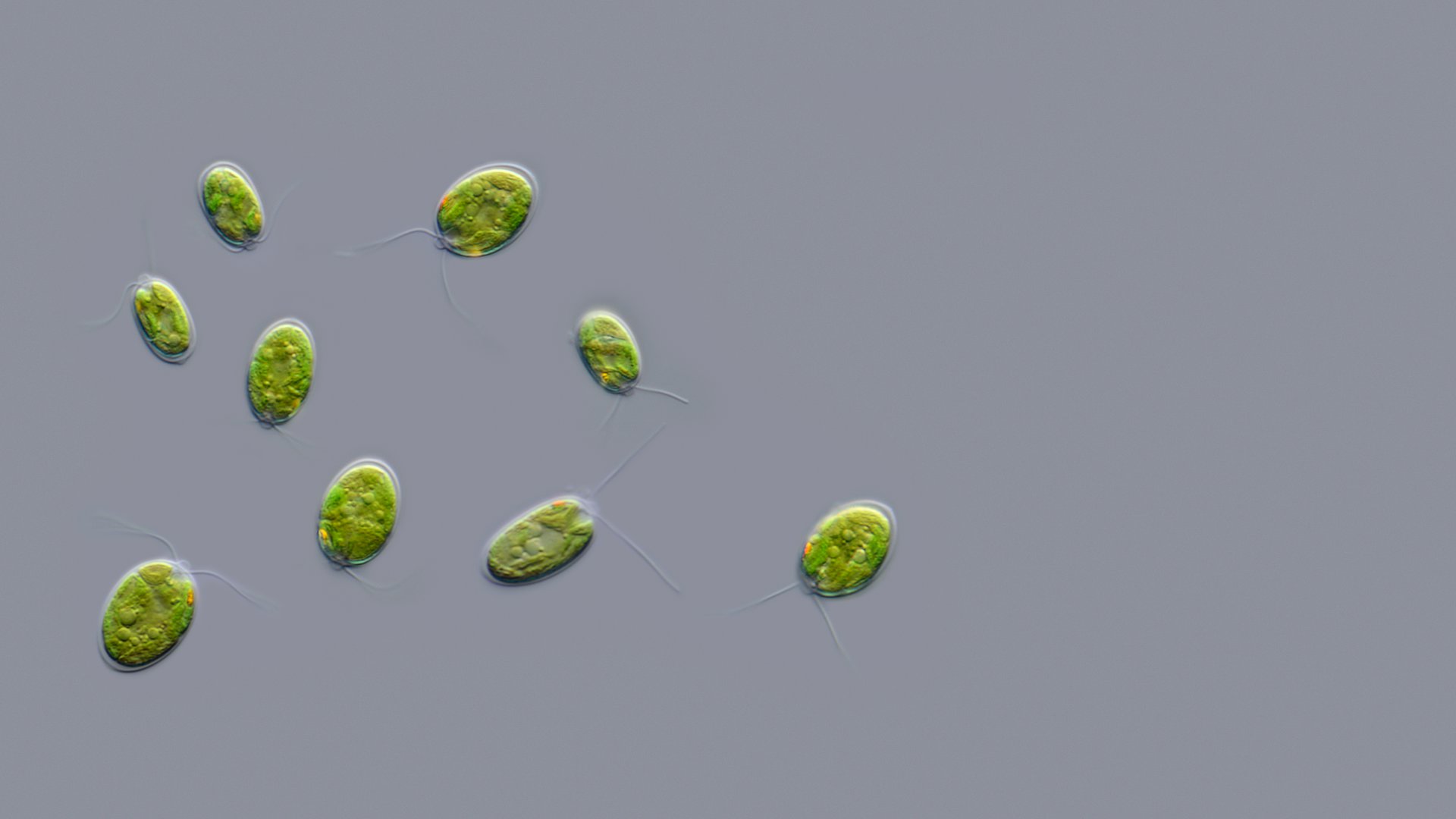There are hundreds of species of Chlamydomonas, but this one is the best known. This green algae is being studied worldwide to solve essential biological questions.
There are hundreds of species of Chlamydomonas, but this one is the best known. This green algae is being studied worldwide to solve essential biological questions.
Biological (super)model
Chlamydomonas reinhardtii is a single-celled green algae of the order Volvacales with a diameter of approximately 10 micrometers (0.01 millimeters). The cells each have two flagella and one eye spot, allowing them to move towards the light. Due to the great ease of cultivation, this is an ideal model organism to investigate fundamental biological questions. For example: ‘How does movement arise in a cell?’ and ‘How do cells respond to light?’ And ‘How do single-celled organisms reproduce?’ It is also an interesting microbe for biotechnological research into biofuel and hydrogen production.
One to many
Genetic research shows that the ancestor of C. reinhardtii has evolved in different ways in the evolutionary tree of life. In addition to the single-celled C. reinhardtii, this has also led to multicellular species. For example to Pandorina morum and Gonium pectoral, colony-forming algae consisting of 8 to 32 Chlamydomonas-like cells.
How do single-celled organisms reproduce?
These algae receive a lot of attention when it comes to research into sex. In a multicellular organism, germ cells are usually formed in a special sex organ. C. reinhardtii is unicellular and as a whole develops into a germ cell. If the conditions are right, the cells divide asexually: two, four or eight daughter cells arise from a dividing mother cell. If the conditions around them are less good, C. reinhardtii can reproduce sexually. There are no "males" or "females" in this species, but so-called pair types: there are + and - cells.
Do you want to know more about reproduction in algae? Anna, one of the volunteer lab technicians in Micropia knows everything about this: read Anna’s blog here.

